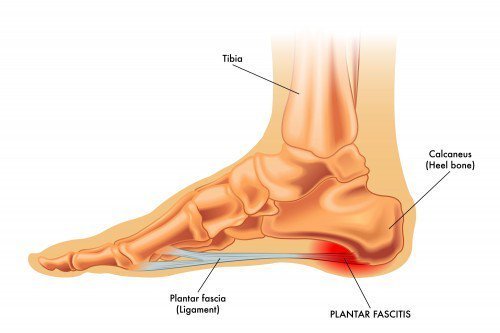What is Plantar Fasciitis
Often regarded as the most common source of heel pain, plantar fasciitis occurs when the ligament that connects the heel bone to the toes, known as the plantar fascia, gets strained causing it to get weak, swollen, and irritated, thus leading to pain in the heel. Most commonly found in middle-aged people, plantar fasciitis is also seen present in younger individuals who are constantly on their feet such as athletes, or soldiers.
How is it caused?
As mentioned, symptoms arise when the plantar fascia ligament becomes strained. When this occurs, the arch becomes weak and unstable which can ultimately cause tiny tears in the ligament. This can lead to pain and swelling around the whole foot but is mainly seen in the heel. Some predisposed risk factors include:
- Excessive pronation (feet rolling inward when you walk)
- High arches or flat feet
- Walk, stand, or run for excessive periods of time (especially on hard surfaces)
- Being overweight
- Wearing shoes that don’t fit or are worn out
- Tight Achilles tendon or calf muscles
Signs and symptoms
Some signs and symptoms for Plantar Fasciitis include:
- Stiffness in heel, and sole of foot
- Pain in bottom of the foot near heel especially after a period of being seated for an extensive period of time (As more movement is made, the pain tends to subside but can return after being seated again)
- Pain in bottom of foot and heel after exercise (not during)
- Inflammation of heel and sole of foot

How long does it last and how is it treated?
Plantar Fasciitis can take months to a year to go away completely, however, with proper treatment pain can subside within a few weeks. In addition, although there are many different ways to treat the injury, sometimes it will not go away unless there is surgery. This is why it is important to start treatment right away in order to determine whether you are getting better before it is too late and chronic pain arises.
Some treatments for plantar fasciitis include:
- Rest, Ice, Compression, Elevation (Most Important!)
- Stretching on a consistent basis, especially in the morning (toe stretches, calf stretches, towel stretches)
- Using orthotics or shoes with good arch support
- Getting physical therapy to strengthen the plantar fascia
- Surgery (usually not needed)
It is important to stay with the treatment, as if you don’t you may experience constant pain when standing or walking. The sooner treatment is started the sooner your feet will stop hurting.
Sumen Singla
Contact Me


